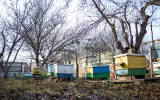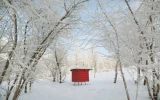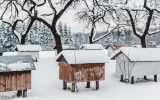How To Optimize Beehive Temperature in Winter: 7 Tips
One of the most important tasks of a beekeeper during the winter is ensuring that the temperature inside the hive stays within a consistent range. If the temperature drops too low, the bees will die. And not many people know that it is in fact too much moisture that gets your bees, not the cold.
Bees need a hive temperature that won't fall below 95°F if they are to survive winter. Insulating the hive, providing a heat source, keeping the bees active, and ventilation can help optimize its temperature. It's critical to keep moisture levels down through proper ventilation.
The good news is that regulating the temperature in a beehive is easy and requires inexpensive materials. I will walk you through several tips that you can do to set up your hive before winter strikes.
Summary
- There are plenty of ways to control the beehive temperature during winter, such as using insulation and adding a heat source.
- It's also important to be prepared during winter emergencies, especially power outages.
- Make a checklist of everything you must prepare to ensure your bees stay warm during the winter.
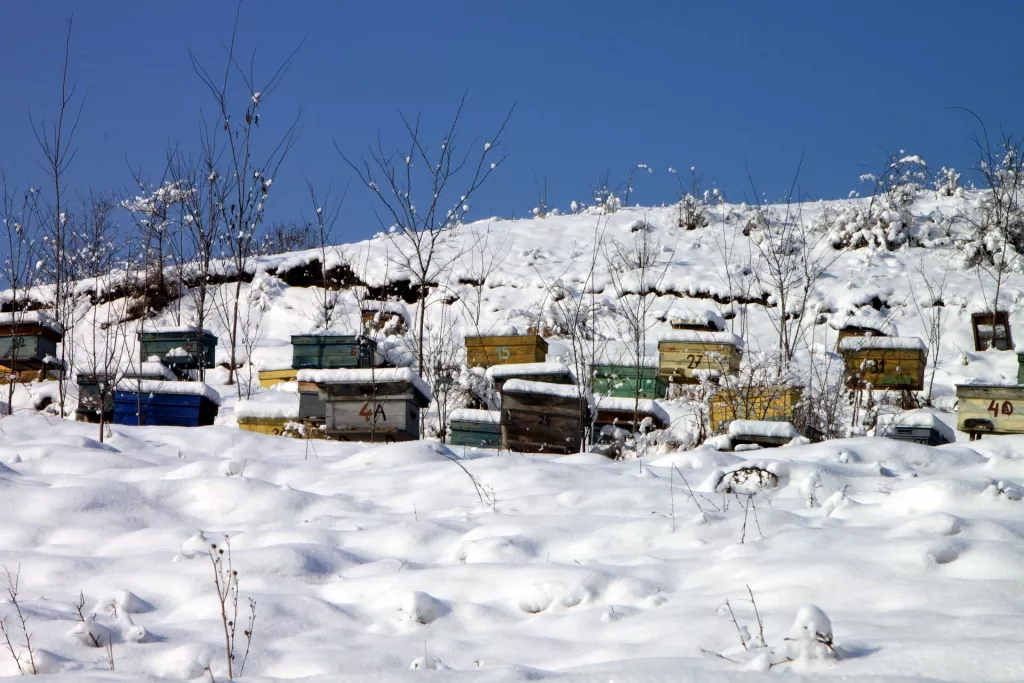
On this page:
7 Tips on How to Control Beehive Temperature in Winter
One of the most critical roles of bees is to regulate the temperature within the hive. By doing so, they will keep the broods alive and help keep the hive functioning even during the cold months. It is also vital to ensure enough food and water inside the hive, so the bees don't have to leave.
1. Insulate the Beehive
It is critical to ensure that the hive is insulated correctly to help the bees with thermoregulation. Use insulated hive boxes or put insulation outside the existing hive. This move will help keep the warmth generated by the bees inside the hive and prevent cold air from entering.
It would help if you also placed the hive in an area protected from cold winds, which can quickly lower the temperature inside the hive. Remember to put barriers, such as windbreakers, around the hive to block winds and keep the temperature inside at the recommended levels.
2. Monitor the Temperature
Keeping track of the temperature inside the hive is also crucial during the winter months. Place a thermometer inside the hive to check the temperature regularly. It's essential to take note of any drastic temperature changes and take action if necessary.
If the temperature drops too much, add extra insulation or a heating source to raise it back to the ideal range. Also, keep an eye on the temperature outside of the hive. If the temperature drops too low, it can be dangerous for the bees to leave the hive, even for brief periods.
3. Maintain the Ideal Humidity
Aside from checking the temperature regularly, you should also monitor the humidity inside the hive. A humidity level between 53 and 61 percent is recommended during winter. Don't hesitate to invest in an excellent temperature and humidity monitor tool, which you can buy online.
If the humidity level is too high, it can lead to mold and mildew growth inside the hive, harming the bees. Meanwhile, if the humidity level is too low, it can cause the bees to dehydrate and lead to death.
4. Maintain Proper Ventilation
During the winter, ensuring the hive has proper ventilation is essential to prevent condensation and mold growth. Without adequate ventilation, the humidity inside the hive can increase, leading to mold growth and eventually causing harm to the bees.
Keeping the hive's entrance unblocked by snow or ice can cause the bees to get trapped inside, leading to a lack of fresh air and food. If you place mouse guards on the hive box's opening, ensure the right size and won't negatively affect the ventilation.
It's important to avoid blocking ventilation holes during insulation, as this can impede airflow and negatively impact temperature regulation.
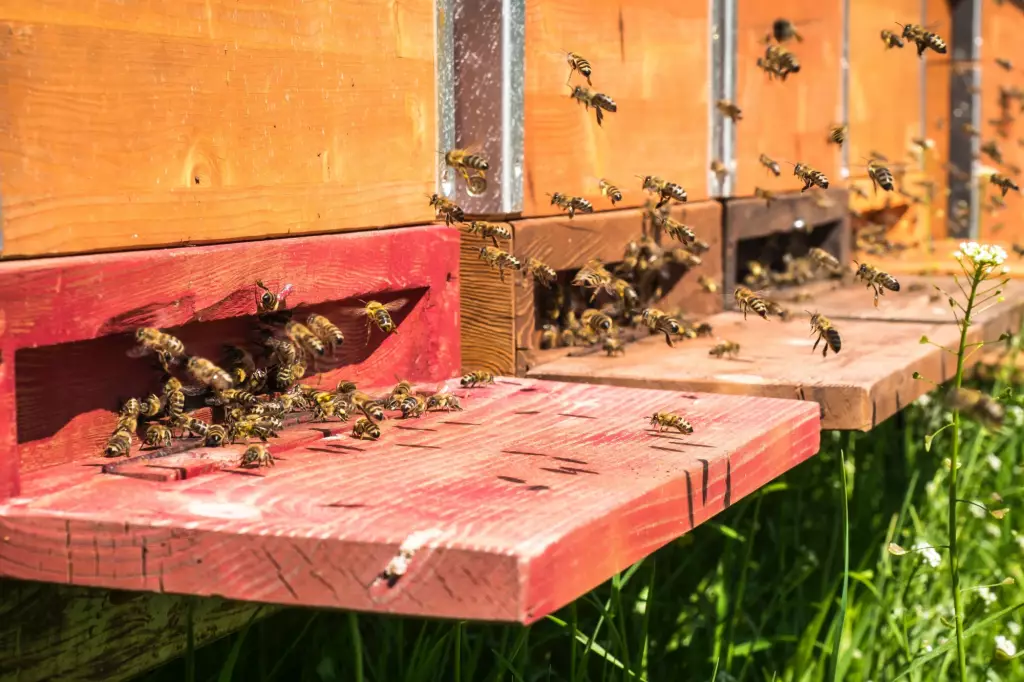
5. Keep the Bees Active
Bees are less active during the colder months and consume more energy to stay warm. A sugar syrup and protein supplement help the bees maintain their energy levels and stay active during the winter.
Sugar syrup is an excellent energy source, and the protein supplement can help them maintain their health and strength during the winter. These food sources can help to keep the bees in good condition and better equipped to survive until the spring.
6. Add a Source of Heat
A heating element such as a light bulb or heating pad can provide extra warmth to the hive. When using a heating element, it is vital to use a thermometer to monitor the temperature inside the hive and avoid overheating.
It's a delicate balance, as the bees need warmth to survive, but overheating can also be dangerous.
7. Consider Wrapping the Hive with Plastic Wrap or Tarp
These items help to keep heat inside the hive and provide additional protection from the elements. Wrapping your hive in a tarp or plastic wrap is also effective when combined with other methods, such as insulation and heating.
There are other insulating materials that are even more effective.
It's also important to keep an eye on the weather forecast and be aware of any cold snaps that may be coming. This knowledge will allow you to take preventative measures, such as adding extra insulation or turning on the heating element ahead of time.
Bonus Tip: Always be Prepared for Emergencies
One of the best ways to be prepared for emergencies is to keep an extra heating element, such as a light bulb or heating pad. Be mindful of a power outage or unexpected cold snap where you might need to provide extra warmth to the hive.
Additionally, it's essential to keep insulation materials such as foam or wool on hand. You can add these things to the hive to provide extra insulation in an emergency.
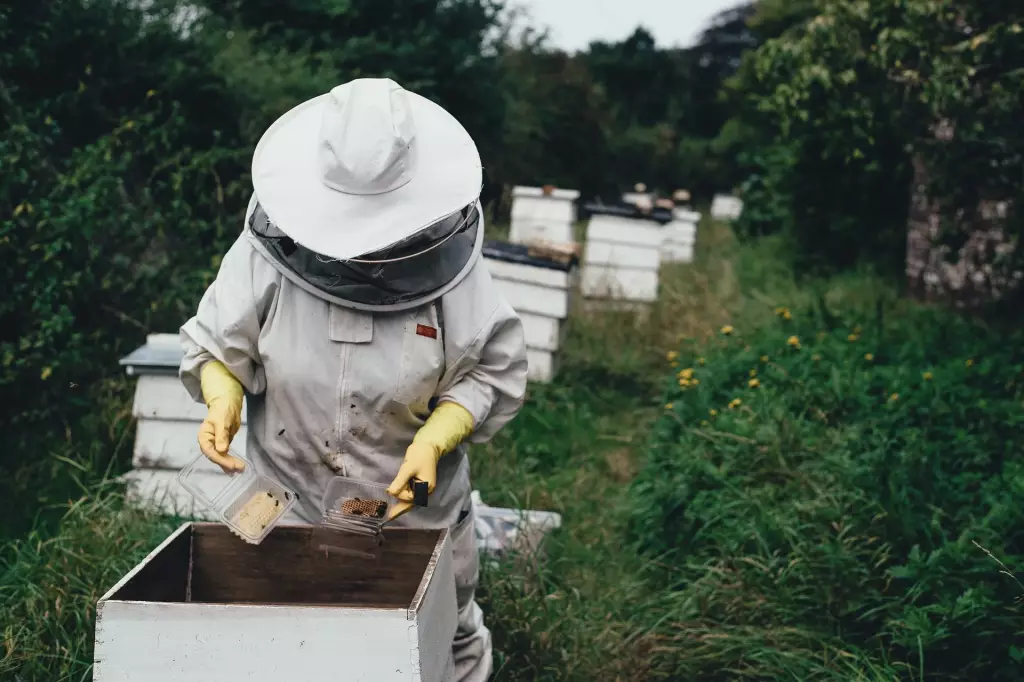
Tips to Prepare the Beehive for Winter
Aside from regulating the correct temperature, it would help if you also prepared other things inside the hive. Bees stop gathering honey during winter, so they must have enough food for about three months.
Ideally, you want to set up your hive with a deep brood box during spring. Areas that experience harsh winters require one deep hive and one medium box for their beehive.
Here are some tips to help your beehive prepare for the winter:
- Ask professional or long-time beekeepers in your area how to configure a beehive properly.
- Ensure the queen is strong and healthy to lay enough brood. In some cases, you might need requeening.
- Check the honey stores; if the hives are too light, feed them more food.
- Prepare between 50 to 100 pounds (lbs) of honey for your bees. Remember, a fully-filled frame can hold up to eight lbs of honey. In comparison, a medium frame can carry up to five lbs.
- Always have supplemental food like heavy syrup, sugar water, candy board, winter patties, and commercial supplements in stock.
- Monitor the hive for pests and diseases weeks before the winter months. This move will help you decide if you need to treat it for varroa mites– one of the leading causes among bees.
- Remove weeds from the hive's base since other creatures, like mice, can hide in these places.
- If the area where the hives are placed is prone to winter floods, move them to higher ground.
If you want to remember to do some of the best practices when preparing your hives for winter, it's best to prepare a checklist. Much like our honey-gathering friends, the months leading to winter are the best time to get busy as a bee.
